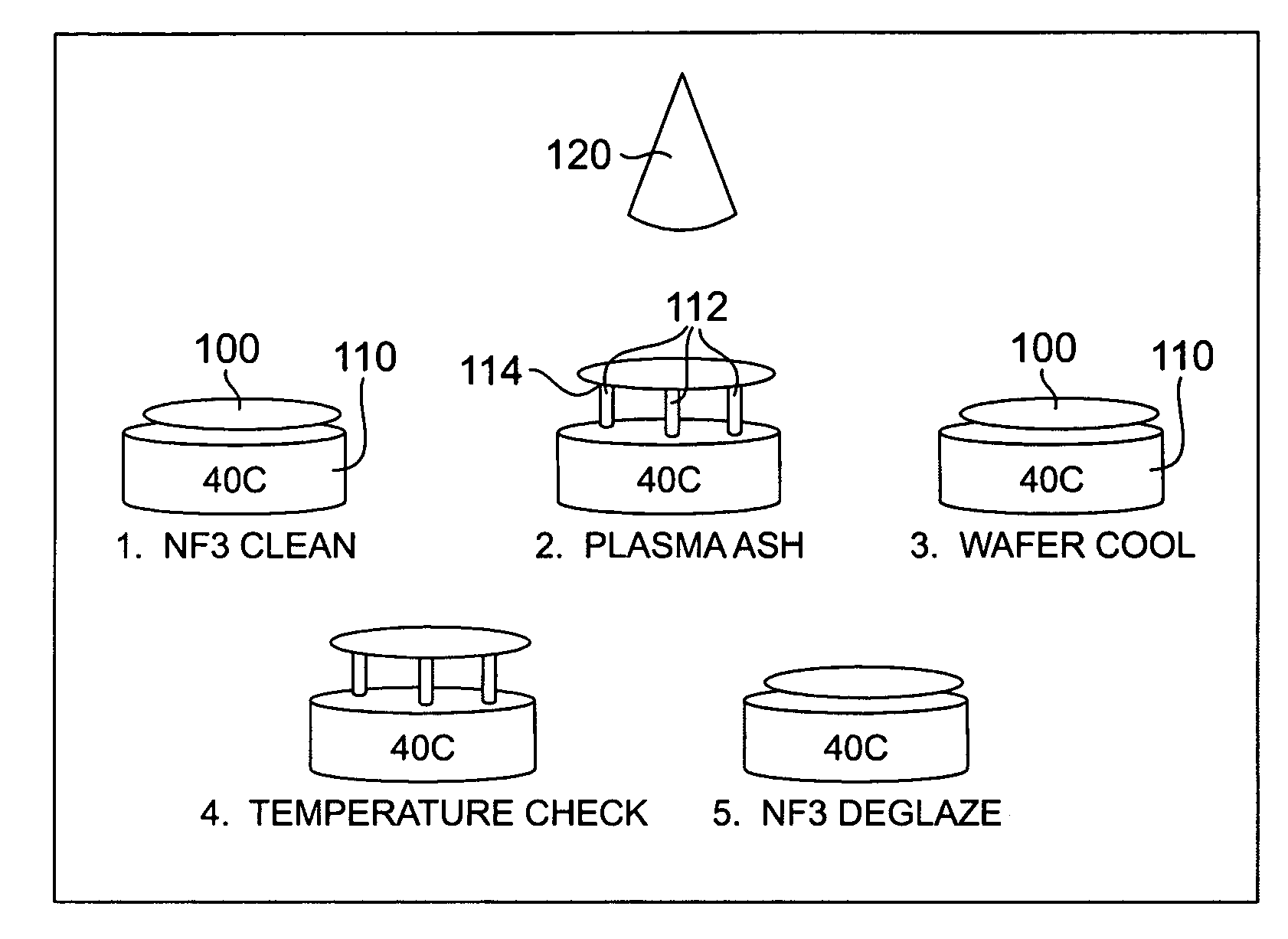Methods of downstream microwave photoresist removal and via clean, particularly following Stop-On TiN etching
a technology of microwave photoresist and microwave etching, which is applied in the direction of photomechanical equipment, instruments, fluid pressure measurement, etc., can solve the problems of affecting the quality of the product, so as to reduce the damage and improve the product quality.
- Summary
- Abstract
- Description
- Claims
- Application Information
AI Technical Summary
Benefits of technology
Problems solved by technology
Method used
Image
Examples
example 1
[0046] Semiconductor wafer samples undergoing fabrication were manufactured and divided into two process groups. The test circuitry includes a Metal-Oxide-Metal (MOM) capacitor between a gate pad and gate oxide. It is believed that if during a process a plasma develops a charge across the MOM capacitor, then the process has the potential to cause plasma damage at the gate oxide. If no charge is developed across the MOM capacitor, it is believed that the process would be free of effects that would cause plasma-derived damage, and the gate oxide would not be damaged during testing.
[0047] In this example, one process group used only downstream microwave plasma to strip the photoresist (i.e., via ashing) following TiN-stop etch process. This via ashing process is identified as “Via clean with downstream ash.” The other process group used downstream microwave plasma in combination with RIE plasma in the same chamber as the wafers. This group is identified as “Via clean with RIE ash.” Th...
PUM
| Property | Measurement | Unit |
|---|---|---|
| temperature | aaaaa | aaaaa |
| temperature | aaaaa | aaaaa |
| temperature | aaaaa | aaaaa |
Abstract
Description
Claims
Application Information
 Login to View More
Login to View More - R&D
- Intellectual Property
- Life Sciences
- Materials
- Tech Scout
- Unparalleled Data Quality
- Higher Quality Content
- 60% Fewer Hallucinations
Browse by: Latest US Patents, China's latest patents, Technical Efficacy Thesaurus, Application Domain, Technology Topic, Popular Technical Reports.
© 2025 PatSnap. All rights reserved.Legal|Privacy policy|Modern Slavery Act Transparency Statement|Sitemap|About US| Contact US: help@patsnap.com


